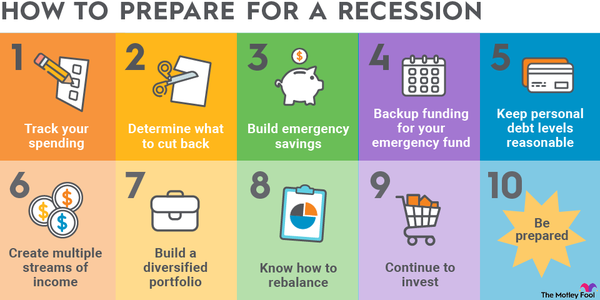A stock market crash can be a daunting prospect for investors. The sudden decline in stock prices and overall market value might seem like a reminder that investing is inherently risky. However, history shows that market crashes, while unavoidable, are a natural part of market cycles. The good news is that you can proactively prepare for such events and protect your hard-earned investments.
This article will guide you on how to prepare for a stock market crash, minimize losses, and emerge in a position of strength. The keyword, “how to prepare for a stock market crash,” will also help you build resilience against potential market downturns.
Why Should You Prepare for a Market Crash?
Market crashes can lead to significant financial losses, even for seasoned investors. By taking steps to prepare, you can ensure that your portfolio remains resilient, protect your financial future, and potentially seize opportunities that often arise during market lows. Preparation isn’t about predicting when a crash will happen but about being ready to respond effectively.
Key Steps to Prepare for a Stock Market Crash
1. Diversify Your Portfolio
Diversification is often referred to as the golden rule of investing, and for a good reason. By spreading your investments across asset classes (stocks, bonds, ETFs, real estate, precious metals, etc.), you minimize your risk of major losses during a crash. The idea is that while one sector may suffer during a downturn, others may remain stable or grow in value.
Additionally, diversifying within sectors (e.g., holding stocks across different industries like technology, healthcare, and energy) ensures that you’re not overly reliant on any single asset.
Action tip: Review your portfolio and identify areas where diversification is lacking.
2. Build a Safety Net with Cash or Liquid Assets
When markets crash, professional traders often move to cash or cash-equivalent assets as a haven. By keeping a portion of your portfolio in cash or liquid assets (Treasury securities, money market funds, etc.), you ensure you can capitalize on opportunities to buy undervalued assets after the crash.
Having a cash reserve also provides stability, so you don’t have to sell investments at a loss to meet financial obligations.
3. Include Guaranteed Investments in Your Portfolio
While guaranteed investments like certificates of deposit (CDs) or government bonds may not offer dazzling returns, they provide reliable stability in times of turbulence. Holding a small portion of your portfolio in such assets can act as a buffer against market volatility.
For longer-term investors, products like fixed annuities or indexed universal life insurance can offer higher returns alongside safety.
4. Pay Off High-Interest Debt
One overlooked strategy when preparing for a stock market crash is reducing your financial obligations. High-interest debts, such as credit card balances or consumer loans, can become a liability during uncertain times.
By paying off significant portions of your debt, especially before a downturn, you can lower financial stress and channel any freed-up cash into safer investment opportunities.
5. Hedge Against Risks
Hedging is another advanced strategy that involves offsetting potential losses. For example:
- Put Options: If you own stocks you expect to decline, buying put options gives you the right to sell at a set price, limiting losses.
- Inverse ETFs: These funds increase in value when the broader market declines. However, these are best suited for shorter-term strategies.
Use hedging selectively, as it requires knowledge of financial products like derivatives.
6. Harvest Tax Losses
If you hold investments that decline during a crash, tax-loss harvesting can soften the blow. This involves selling losing investments in taxable accounts to offset gains or reduce your taxable income (up to $3,000 per year).
Post-sale, wait 31 days before repurchasing the same shares to avoid the IRS wash sale rule. This strategy minimizes tax liability while maintaining your long-term investment portfolio’s structure.
7. Focus on Long-Term Investing
Market crashes, although severe in the short term, often resolve over time. Instead of panicking, remind yourself of your long-term goals. Historical data shows that markets typically recover and even surpass their previous highs.
For long-term investors, crashes can present a rare opportunity to purchase quality assets at a discount. Companies with strong fundamentals generally weather downturns well, eventually bouncing back when the market stabilizes.
8. Work with a Financial Planner
Navigating uncertain markets can be challenging on your own. Consider working with a financial professional to create a strategy tailored to your financial needs, risk tolerance, and investment timeline. A qualified advisor can also help you separate emotion from logical decision-making during downturns.
Signs of an Impending Crash
It’s impossible to predict a market crash with 100% certainty. However, there are indicators of trouble, such as uncontrollable volatility, a surge in speculative behavior, or excessive debt across global markets. Keeping an eye on these trends can help you act proactively.
The Bottom Line
Preparing for a stock market crash is about building resilience into your investment strategy and mindset. By diversifying your portfolio, maintaining liquidity, paying off debts, and utilizing hedging and tax strategies, you equip yourself with the tools to survive and even thrive in turbulent market conditions.
Remember, a market crash is not the end of the world. With the right preparation, it can be an opportunity to strengthen your financial standing and seize attractive investment opportunities.
Always base your strategy on your risk tolerance and financial goals. For specific advice tailored to your situation, working with a financial professional is highly recommended.








